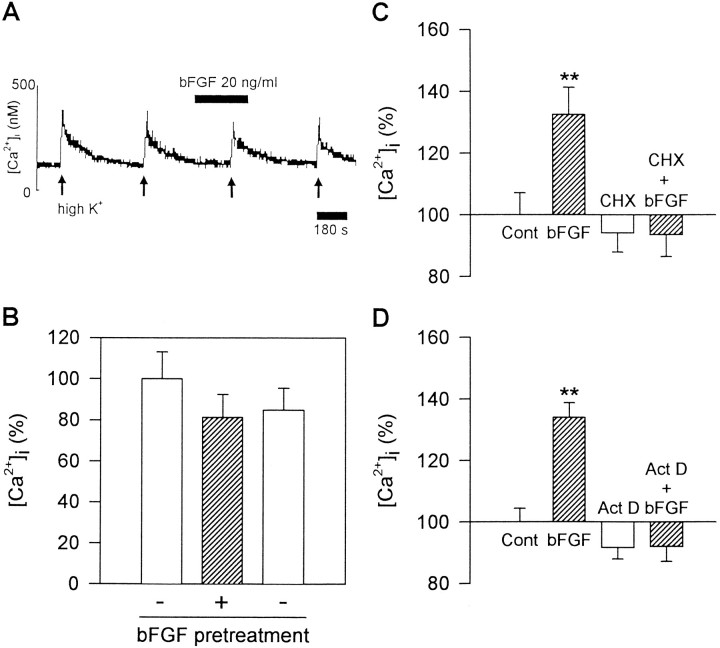Fig. 3.
Involvement of protein synthesis in bFGF action.A, B, Acute application of bFGF did not enhance the high K+-induced Ca2+ transients. Challenges with 50 mm K+ were performed four times at 8 min intervals. bFGF (20 ng/ml) was applied for 3 min before and during the third challenge. The effect was estimated as the relative amplitude of the Ca2+ transients, setting those induced by the second challenge as 100%. A shows the representative recording and B shows the mean values of Ca2+transients at second, third, and fourth challenges with 50 mm K+ (from left toright, n = 17). C, D, Effects of cycloheximide (CHX) and actinomycin D (Act D) on bFGF action. Hippocampal neurons were incubated with 0.1 μm cycloheximide or 1 nmactinomycin D during bFGF treatment from 2 to 4 DIV. The amplitude of Ca2+ transients evoked by 50 mm K+was normalized to control (Cont). Both cycloheximide and actinomycin D virtually abolished the effect of bFGF (n = 93–104). Asterisksindicate significant differences from the control group; **p < 0.01 (Duncan’s multiple-range test).

